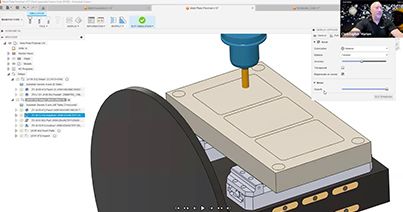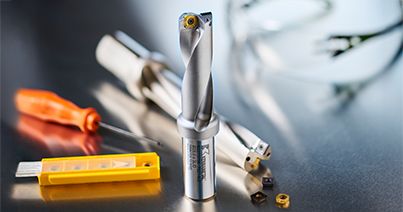
Work hardening can be a significant challenge in machining, leading to increased tool wear, reduced efficiency, and compromised part quality. In this guide, we'll share practical tips and strategies to help you minimize the risk of work hardening and ensure smoother, more efficient machining operations.
What is Work Hardening
Work hardening of materials is a condition that should be avoided while machining. It occurs when the heat generated by the cutting tool transfers to the workpiece material, causing plastic deformation. When a part work hardens during machining, its surface becomes shiny and glazed, appearing slippery. In some cases, the machined part can even attain a hardness comparable to that of the cutting tool.
How to Avoid Work Hardening
- Keep Cutting Tools Sharp: Always ensure that your cutting tools are sharp. Dull tools increase friction and heat, leading to work hardening.
- Use Recommended Feeds and Speeds: Operate at the recommended feeds and speeds for the material being machined. Incorrect settings can cause tool rubbing instead of cutting, which increases heat. Maintaining an optimal chip thickness can help reduce the risk of work hardening. Therefore, when reducing the radial depth of cut in milling, ensure you adjust the feed rate to maintain the correct chip thickness.
- Avoid Using Spring Passes: When milling, spring passes can cause work hardening due to increased rubbing rather than cutting. This can negatively impact the material and the efficiency of the milling process.
- Utilize Coolant-Fed Tools: Use coolant-fed tools to manage heat. Water-based coolant should be mixed at 8% to 10% minimum. The higher concentration can help with lubrication which can help minimize work hardening.
- Avoid Dwelling: Do not let the tool dwell in one position. Continuous movement helps prevent localized heating.
- Maintain Constant Feed When Drilling: When drilling, maintain a constant feed rate whenever possible to avoid heat buildup.
- Peck Drilling Technique: If peck drilling is necessary, reduce the number of pecks and withdraw each peck by one tool diameter to clear chips and reduce heat.
- Address Tap Breakage: If experiencing tap breakage, consider that the cause might be a work-hardened hole rather than the tap itself.
- Material Considerations: Be aware that stainless steels and high-temperature alloys are particularly prone to work hardening.
- Regular Tool Maintenance: Proper maintenance of tools is crucial in reducing work-hardening problems. Regularly inspect and replace tools as needed.
Conclusion
Work hardening can be a major challenge in machining that can lead to increased tool wear, reduced efficiency and compromised part quality. By understanding the causes and implementing the strategies, you can minimize the risk of work hardening. Always ensure your cutting tools are sharp, use the recommended feeds and speeds and maintain proper tool maintenance. With these practices, you can achieve smoother and more efficient machining operations, ultimately improving the quality and longevity of your machined parts.
Related Articles
- Kennametal Showcases Innovations Globally Kennametal has been taking the spotlight globally by showcasing the latest innovations at tradeshows including IMTS Chicago, AMB Stuttgart, & JIMTOF Tokyo.Kennametal has been taking the spotlight globally by showcasing the latest innovations at tradeshows including IMTS Chicago, AMB Stuttgart, & JIMTOF Tokyo.
- Machining in an Integrated World: Kennametal's Collaborative Tooling PlatformKennametal.com is now the perfect collaborative space that provides a seamless experience, offering all the functionality needed for everyone’s manufacturing processes. Learn more.Kennametal.com is now the perfect collaborative space that provides a seamless experience, offering all the functionality needed for everyone’s manufacturing processes. Learn more.
- Webinar: Unlock Efficiency with Autodesk Fusion and Kennametal Tooling SolutionsDiscover how to import Kennametal tooling data into Autodesk Fusion and optimize your manufacturing processes with our in-depth webinar.Discover how to import Kennametal tooling data into Autodesk Fusion and optimize your manufacturing processes with our in-depth webinar.



